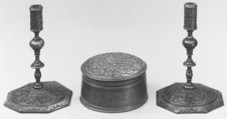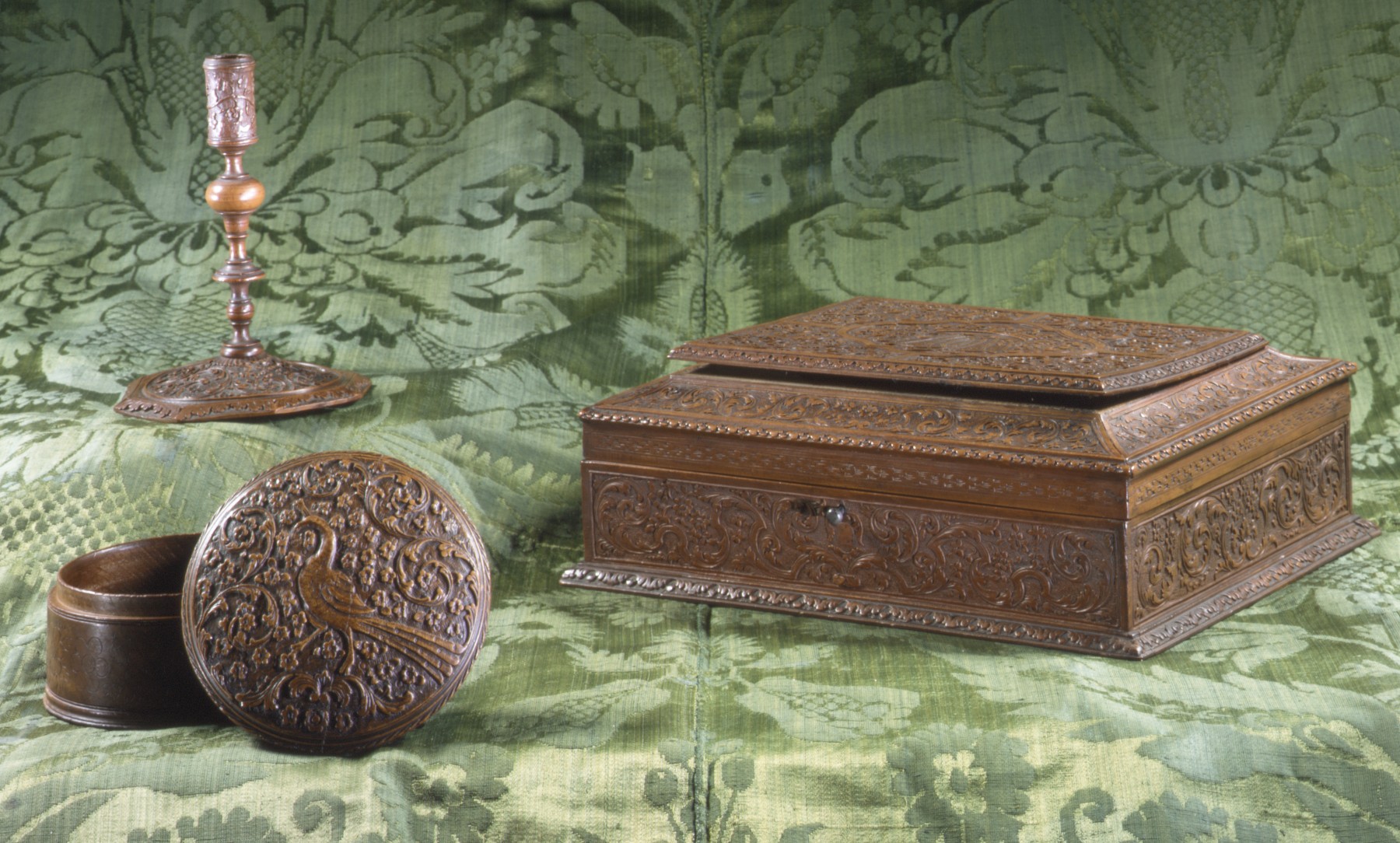Pair of candlesticks (part of a set)
Nicolas François Foulon French
Pair of candlesticks with turned shafts and octagonal bases carved with scrolling acanthus leaves and floral motifs typical for a group of objects made in Nancy, eastern France. The very fine-grained cherry wood, known as “bois de Sainte Lucie,” grew in a nearby forest. Named for the patron saint of the Lorraine region, this type of fruitwood was appreciated for its reddish-brown color and its pleasant smell reminiscent of cinnamon. Furthermore, it lent itself beautifully to carving often in intricate patterns resembling goldsmith work.
These candlesticks would have been part of a larger dressing-table set which would also have included a mirror, a series of different boxes, brushes, and a pincushion. The use of “bois de Sainte Lucie” for dressing-table sets was stimulated by Louis XIV’s sumptuary edicts of 1689 and 1709, which caused much French silver to be melted down.
Due to rights restrictions, this image cannot be enlarged, viewed at full screen, or downloaded.
This artwork is meant to be viewed from right to left. Scroll left to view more.



